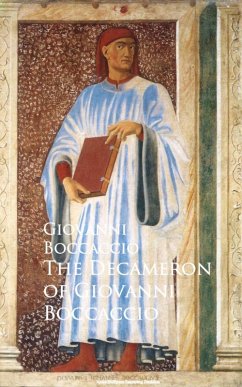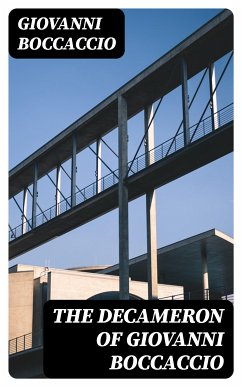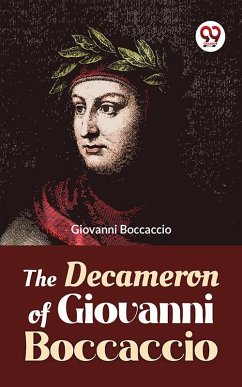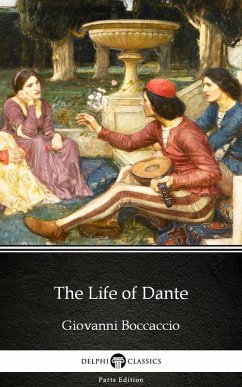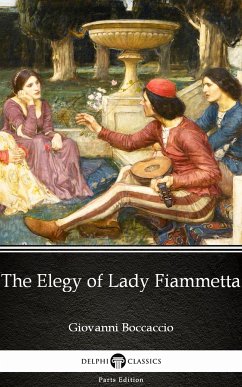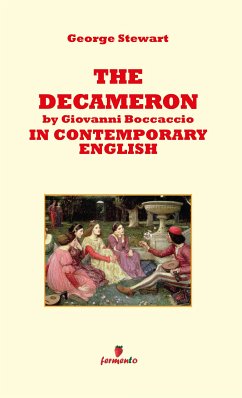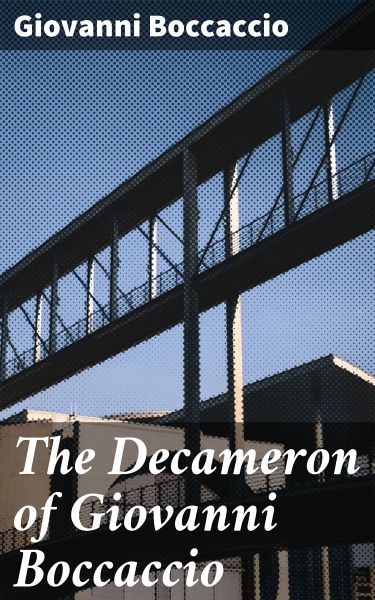
The Decameron of Giovanni Boccaccio (eBook, ePUB)
Enriched edition. Medieval Tales of Love and Fortune: A Journey through Boccaccio's Decameron
Kommentar: Merriweather, Fiona / Redaktion: Good Press / Übersetzer: Payne, John

PAYBACK Punkte
0 °P sammeln!
In 'The Decameron,' Giovanni Boccaccio masterfully weaves a tapestry of stories that reflect the complexity of human relationships amidst the backdrop of the Black Death in 14th-century Florence. This seminal work is structured as a frame narrative, wherein ten young individuals retreat to the countryside to escape the plague, each sharing tales that range from tragic to comedic. Boccaccio's rich, vernacular Italian not only showcases his literary finesse but also immerses the reader in the cultural mores, moral dilemmas, and social hierarchies of his time, making it a vital piece of early hum...
In 'The Decameron,' Giovanni Boccaccio masterfully weaves a tapestry of stories that reflect the complexity of human relationships amidst the backdrop of the Black Death in 14th-century Florence. This seminal work is structured as a frame narrative, wherein ten young individuals retreat to the countryside to escape the plague, each sharing tales that range from tragic to comedic. Boccaccio's rich, vernacular Italian not only showcases his literary finesse but also immerses the reader in the cultural mores, moral dilemmas, and social hierarchies of his time, making it a vital piece of early humanist literature. Boccaccio, a contemporary of Petrarch and a prominent figure in the Italian Renaissance, drew from personal experiences and contemporary societal observations to craft 'The Decameron.' His own encounters with life, death, and love in plague-ridden Italy inform the poignant themes that resonate throughout his narratives. The work serves as both a reflection of medieval life and a precursor to modern storytelling, revealing the enduring nature of human emotion and folly. Readers are encouraged to delve into 'The Decameron' for its narrative ingenuity and its profound exploration of the human condition. This timeless collection, though rooted in a specific historical context, speaks to universal themes and remains relevant, captivating audiences with its blend of realism and fantasy. A must-read for scholars and enthusiasts of literature, it offers insights into medieval society while challenging readers to reflect on their own moral and ethical landscapes. In this enriched edition, we have carefully created added value for your reading experience: - A succinct Introduction situates the work's timeless appeal and themes. - The Synopsis outlines the central plot, highlighting key developments without spoiling critical twists. - A detailed Historical Context immerses you in the era's events and influences that shaped the writing. - An Author Biography reveals milestones in the author's life, illuminating the personal insights behind the text. - A thorough Analysis dissects symbols, motifs, and character arcs to unearth underlying meanings. - Reflection questions prompt you to engage personally with the work's messages, connecting them to modern life. - Hand-picked Memorable Quotes shine a spotlight on moments of literary brilliance. - Interactive footnotes clarify unusual references, historical allusions, and archaic phrases for an effortless, more informed read.
Dieser Download kann aus rechtlichen Gründen nur mit Rechnungsadresse in A, B, BG, CY, CZ, D, DK, EW, E, FIN, F, GR, H, IRL, I, LT, L, LR, M, NL, PL, P, R, S, SLO, SK ausgeliefert werden.




